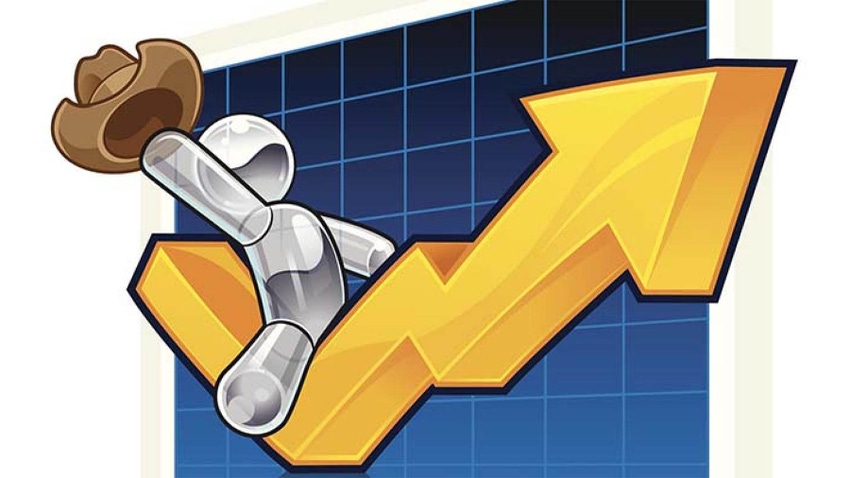October 27, 2023

If you are a parent and your child gets picked on, you most likely would tell your child to stand up for themselves. When we are physically threatened, most of us have the mindset to fight back and defend ourselves. For that reason, we don’t go around punching people, even though they may deserve it, because they may fight back. When the element of physical threat is removed, we drop our guard and most likely will not defend ourselves.
Last year at an auction, I bid on and bought a group of bred heifers. The market was demanding that they weigh over 1,050 pounds to fetch a good price. The ones I bought were nine weights and in the second period, giving me time to feed some weight onto them. After the auctioneer knocked them off on me, I turned to the seller and asked him if he wanted to let them go since I had just bought them for the equivalent of a couple cents over nine weight feeder heifer price. I gave him a chance to defend himself.
Some people are shocked to find out that they can “no sale” their cattle at an auction. It is not something we ever want to do, and rarely will we ever have to do it. Sometimes it may be in our best interest to do so.
Years ago, I sold a load of Holstein steers. The sale barn sorted them into two groups. They sold some before they sold my consignment, and therefore, I already knew my light end wouldn’t get much interest from buyers. The heavy draft sold well, and I gave the auctioneer a chance to auction off the light end. Like I suspected, they didn’t sell well, so I did what is called a Pass Out (PO), or a no sale. I defended myself.
Since my heavy group was overvalued to other lighter weights, I started buying some of those. I did a sell/buy trade right there, that quick. I bought back the weight of steers that I Passed Out. I turned what could have been painful into something good. The thing to remember about undervalued cattle is that in time they will become overvalued. A few months later I sold them all as a load lot and was satisfied with what they brought. By defending myself that day, and immediately switching from seller to buyer, I prevented myself from digging a hole financially.
When I offered to let the seller of those bred heifers I bought last year take them home, he declined. Even though the sell price wasn’t good, he needed the money. I write on here regularly that the market will come around and help you. You must be patient and wait for it to signal to you. The thing is, it also goes the other way. The market has a way of sensing desperation and greed and will hammer these people. Selling animals because we need money is not a good practice. It is a Murphy’s Law situation if we sell because we need money; we will most likely end up selling undervalued animals.
Before I get some angry texts from my auctioneer buddies about POing cattle, I should be clear about a few things. As sellers, we must learn to be objective and understand no one else thinks our cattle are as good as we think they are. We must also learn to be good appraisers. The last thing to keep in mind is the only reason an animal is overvalued is because that is what everyone is bidding on. Knowing these things will give us a realistic view of what our cattle are worth.
I saw an example of this at a female sale this week. There was a group of small frame cows that sold, and they were $500 per head back from the large frame cows that were in the same gestation period and same body condition. Buyer desire is what creates the market, and there was little desire from buyers for these short frame cows.
Other things that affected selling price was their expected calving date. Do they fit the desired calving window? Also, what they were bred to affects buyer desire. We all have our opinion on the right time to calve and what bulls we think are best, but that doesn’t mean the people bidding on our cattle agree with our opinion.
We must keep these things in mind and be honest with ourselves before we PO cattle. Do this only when the situation warrants it. Doing this too often can only hurt you. At a horse auction I go to regularly, there is a guy who brings in some horses a couple times a year. He always wants more for them than what they sell for, so he PO’s them. This guy always has good horses, and last fall he had one I wanted. But I'd seen him PO so many times that I didn’t even bother to bid on that horse. Of course, wouldn’t ya know it, that was the one time he let it go. If he hadn’t built up his reputation as not selling everything, he would’ve gotten more money for that horse.
Market report
At some female sales in the Plains states, bred cows sold above their Intrinsic Value (IV), except those that were over 6 years old and calving February or later. That right there is a clear example of buyer desire creating the market. Age and time of calving affected selling price of bred females.
Spring calving bred heifers sold at to slightly over their IV. They sold for less than a person would have in them. This has been the reoccurring theme for bred heifers all year; we can buy them cheaper than we can make them into bred heifers. In other parts of the country, like the south and the west, the opposite holds true. This underscores the importance of knowing the market you are selling in to.
On the note of knowing the market. We must understand price relationships. Even though a producer would have more in the bred heifer than she is worth, that producer could still buy back replacement quality five weight heifers and still generate positive cash flow and execute a winning trade. This is the beauty of legit sell/buy marketing.
Here’s something else to be aware of. At that same sale barn nine weight feeder heifers were less than $100 per head back from the bred heifer average. This means the five weight heifer is more undervalued to the nine weight feeder than the bred heifer.
What do you do if you sold the bred heifers? Two things. First, females that sold on the regular weekly auctions were significantly lower than those that sold on the monthly specials. Second, defend yourself and pass them out. The market will change and they may go up in value. If this is the option that was implemented be prepared to hold onto them for a while. This means you will need to have feed and money.
Cows that were between 3 and 6 years old sold for several hundred dollars more than bred heifers. Demand for pairs was strong. They sold well above bred cows and well over their IV.
Even though feeder price took a little dip this week, the Value of Gain remained strong, signaling that this is still a weight gain business. With the price relationships still signaling that, overall price doesn’t matter much to the legit sell/buy marketer because margins are still there to be captured.
About the Author(s)
You May Also Like






